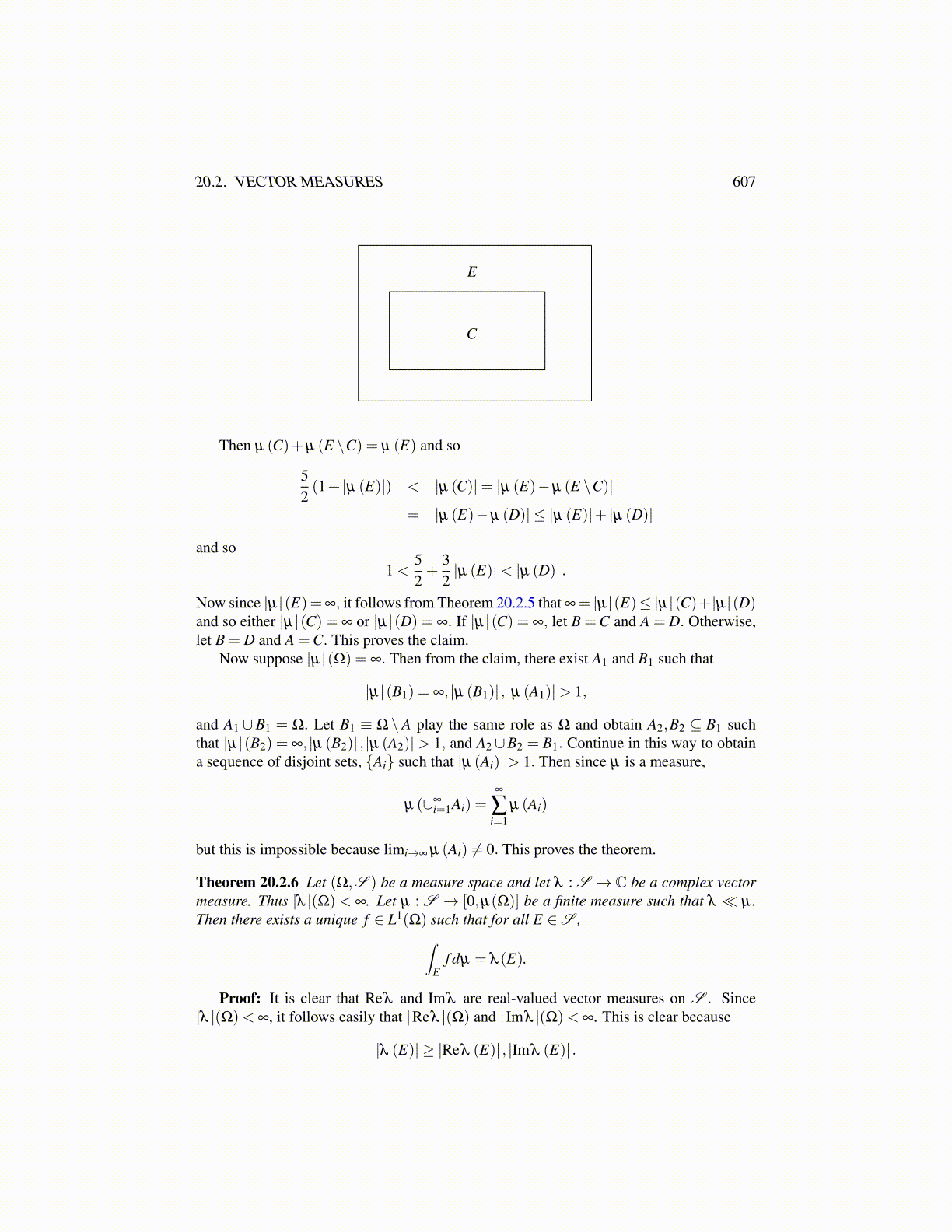
20.2. VECTOR MEASURES 607
E
C
Then µ (C)+µ (E \C) = µ (E) and so
52(1+ |µ (E)|) < |µ (C)|= |µ (E)−µ (E \C)|
= |µ (E)−µ (D)| ≤ |µ (E)|+ |µ (D)|
and so1 <
52+
32|µ (E)|< |µ (D)| .
Now since |µ|(E)=∞, it follows from Theorem 20.2.5 that ∞= |µ|(E)≤ |µ|(C)+ |µ|(D)and so either |µ|(C) = ∞ or |µ|(D) = ∞. If |µ|(C) = ∞, let B =C and A = D. Otherwise,let B = D and A =C. This proves the claim.
Now suppose |µ|(Ω) = ∞. Then from the claim, there exist A1 and B1 such that
|µ|(B1) = ∞, |µ (B1)| , |µ (A1)|> 1,
and A1 ∪B1 = Ω. Let B1 ≡ Ω \A play the same role as Ω and obtain A2,B2 ⊆ B1 suchthat |µ|(B2) = ∞, |µ (B2)| , |µ (A2)| > 1, and A2∪B2 = B1. Continue in this way to obtaina sequence of disjoint sets, {Ai} such that |µ (Ai)|> 1. Then since µ is a measure,
µ (∪∞i=1Ai) =
∞
∑i=1
µ (Ai)
but this is impossible because limi→∞ µ (Ai) ̸= 0. This proves the theorem.
Theorem 20.2.6 Let (Ω,S ) be a measure space and let λ : S → C be a complex vectormeasure. Thus |λ |(Ω) < ∞. Let µ : S → [0,µ(Ω)] be a finite measure such that λ ≪ µ .Then there exists a unique f ∈ L1(Ω) such that for all E ∈S ,∫
Ef dµ = λ (E).
Proof: It is clear that Reλ and Imλ are real-valued vector measures on S . Since|λ |(Ω)< ∞, it follows easily that |Reλ |(Ω) and | Imλ |(Ω)< ∞. This is clear because
|λ (E)| ≥ |Reλ (E)| , |Imλ (E)| .